The Church of St. Ludmila was completed within a year of Tim's childhood church - 1892 - so not ancient.
No partying in the park.
We start the day with a tour of Prague's Jewish Quarter.
The Old Jewish Cemetery is one of the largest of its kind in Europe and one of the most important Jewish historical monuments in Prague. It served its purpose from the first half of the 15th century until 1786.
To provide for more burials within the same spaces, and not remove graves, layers of burials occurred with gravestones raised up to the new level, creating a high density of grave markers.
Matza making tools.
The Ceremonial hall of the Prague Jewish Burial Society was built for the last service to the deceased members of the Prague Jewish Community. It is now used as an exhibition space administered by the Jewish Museum in Prague. The building is an excellent example of Romanesque Revival architecture.
Maisel Synagogue was built at the end of the 16th century which is considered to be the golden age of the ghetto. Since then its appearance has changed several times, its actual style is neo-gothic.
| Attribution: by Jewish Museum in Prague, available from http://www.jewishmuseum.cz/pro-media/fotografie-a-film/fotografie-ke-stazeni/ | Our photo - a quick snap as we entered. |
| "A golem is an animated, anthropomorphic being in Jewish folklore, which is entirely created from inanimate matter, usually clay or mud. The most famous golem narrative involves Judah Loew ben Bezalel, the late 16th-century rabbi of Prague. According to Moment magazine, "the golem is a highly mutable metaphor with seemingly limitless symbolism. It can be a victim or villain, man or woman—or sometimes both. Over the centuries, it has been used to connote war, community, isolation, hope, and despair." " |
The Spanish Synagogue, 1868, is the newest synagogue in the area, it was built at the place of the presumably oldest synagogue, Old School (also known as Altshul). The synagogue is built in Moorish Revival Style. Only a little park with a modern statue of famous Prague writer Franz Kafka (by Jaroslav Róna) lies between it and the church of Holy Spirit. Today, the Spanish Synagogue is administered by the Jewish Museum in Prague.
Time for a Pivovar (Brewery). Brevnov Monastery Brewery of St. Adalbert, Prague, Czech Republic.
An office complex we strolled past, after getting off the metro, and on our way to the next tour start.
Vyšehrad (Czech for "upper castle") is a historic fort just over 3 km southeast of Prague Castle, on the east bank of the Vltava River, built in the 10th century. Inside the fort are the Basilica of St. Peter and St. Paul and the Vyšehrad Cemetery, containing the remains of many famous Czechs, such as Antonín Dvořák, Bedřich Smetana, Karel Čapek, and Alphonse Mucha. It also contains Prague's oldest Rotunda of St. Martin, from the 11th century.
Ice cream is discovered just inside the entrance.
11th century Rotunda of St. Martin
Great views are to be had from the overlooks - the area is popular for gathering for New Year's Eve.
We're winding down our day's touring - see the silhouettes, Gerri is planning our next move and Tim is snapping more photos.
Pilsners at sunset on an old boat barge on the River Vltava.
Girl in Black: "What have we here?" Girl in Tan: "It's a door window, watch me walk right out!"
Good evening and Good night Prague!











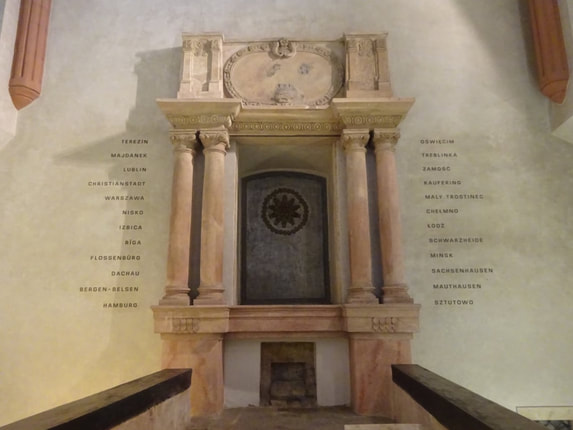


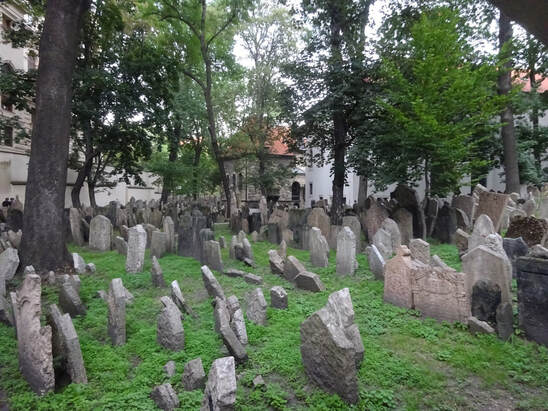







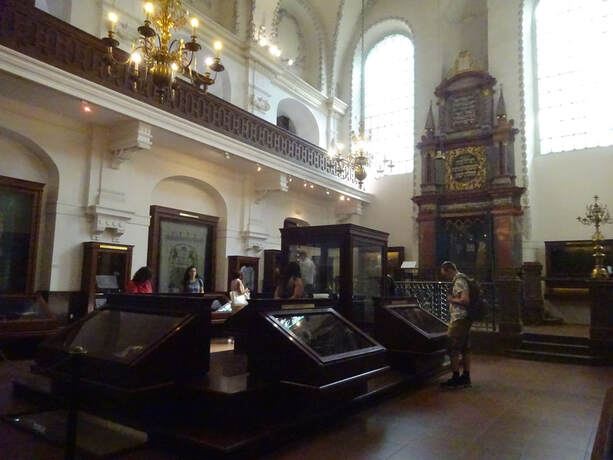

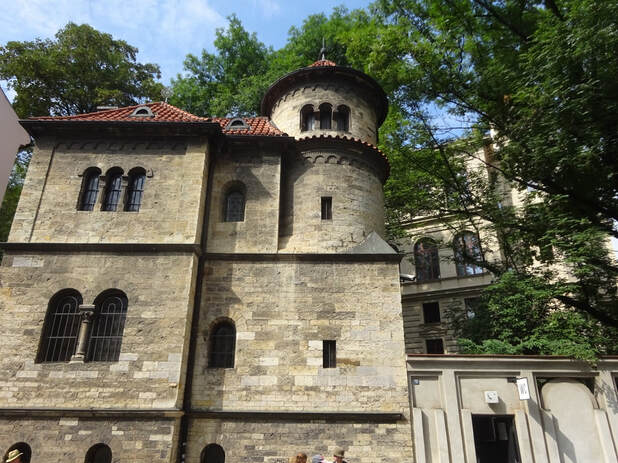















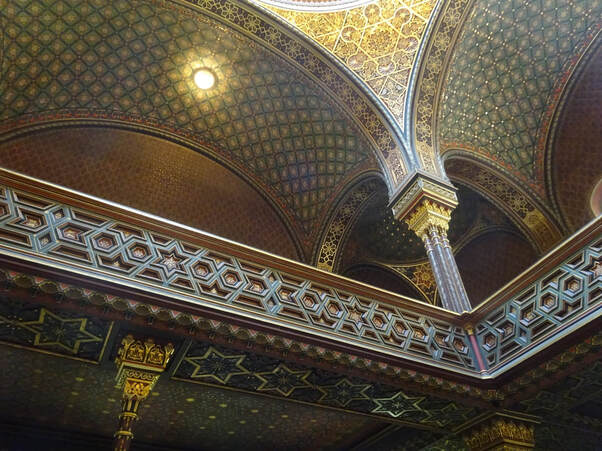














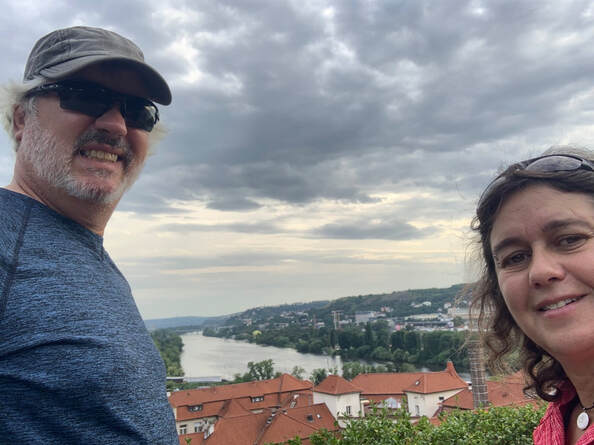










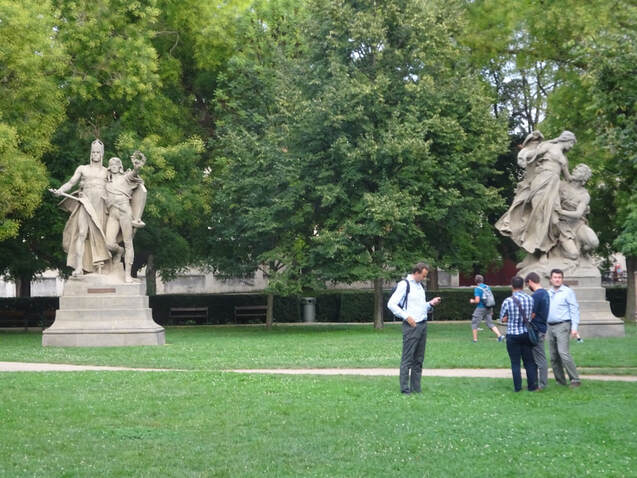






 RSS Feed
RSS Feed
